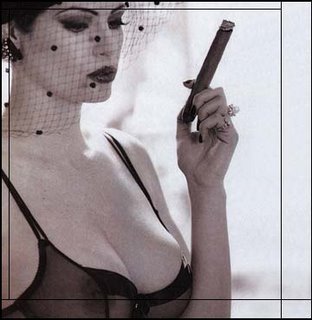 Big Mike
Big MikeStale Cigars and Aging
From time to time, friends, acquaintances, and customers will state that a cigar is "stale" and therefore not up to par. I usually just shake my head and keep on trucking with whatever I am doing. But enough is enough. Let's set the record straight–there is nothing worse then telling a tobacconist that he is selling "stale" cigars. Cigars are not like bread, pretzels, or potato-chips; they do not go "bad" after a certain amount of time. As a matter of fact, they often improve with age, just like wine, given proper storage. If a cigar is dry, cracked, or falling apart, it is not because of the amount of time elapsed since they were rolled but because it was not properly humidified, were handled carelessly, or swings in humidity have caused the tobaccos to expand and contract repeatedly. If the cellophane covering your cigars has a yellowish tint, be happy, it is likely you have a cigar that has been aging for several years in its box; and if properly humidified, is usually an improved smoke.
Want to know more about how age affects a cigar? Well I've got you covered–follow along and you are on the way to becoming an aficionado. Typically, aging makes a smoother, more pleasant, “round” cigar. Most experts agree that aging does not necessarily make a cigar better, but simply rounder, producing a mellower character with a less sharp tobacco taste. If any of you have smoked a cigar months after the actual purchase date - after they've had some TLC in your humidor, you more than likely noticed a mellower taste and strength. Another characteristic of an aged cigar is typically a more even, gentler burn and draw. A freshly rolled cigar will sometimes be a little too moist and those two characteristics can suffer. Laying them in your humidor can give cigars time to dry out allowing the long-filler tobacco to loosen up considerably. The tobaccos will marry and create a more refined taste. In fact, some cigar enthusiasts buy full boxes or bundles - not to smoke them right away, but to age or “rest” in their humidor. Many have the patience to let them stay for a year or more! Patience is indeed a virtue when it comes to aging your cigars.
Interested in aging your cigars? The amount of time you age cigars is a matter of personal preference. In general, age them at least a year for optimum effect. Of course, some low-quality cigars won't see much improvement with aging - remember "garbage in, garbage out." However, keep in mind that some cigars will have pleasantly rich flavors after aging, even though today they might smell like a dumpster - much the same way that good wines for aging are too tannic to drink when young. Certain cigars are just naturally better suited for aging. An example is larger ring-gauge cigars. The thicker the cigar, the greater the variety of tobacco leaves and hence, the more complex the final flavor of the aged cigar. The extreme insides of larger cigars tend to be somewhat shielded from the outside environment, less affected by fluctuations in humidity and temperature. This added stability is highly desirable for long-term aging. Some cigars, on the other hand, don't benefit from aging. Maduro-wrapped cigars, for example, which are artificially "cooked" or "cured" to achieve the dark coloration of the wrapper, are essentially "fixed," and thus any further benefits of aging have been stunted. It is different with each cigar, but there does come a point when the cigar is optimum and any additional aging simply won’t enhance the cigar any further.
- Big Mike
www.bigmikescigars.com



